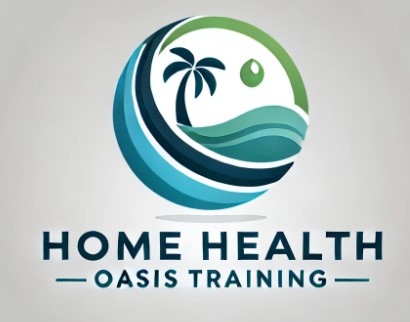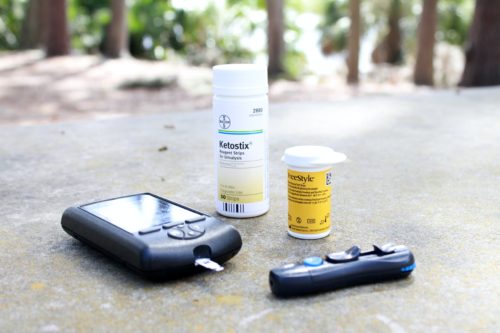The Role of Clinical Documentation in Home Health Coding
Clinical documentation is a foundational aspect of the healthcare industry, and it plays a crucial role in determining the accuracy of home health coding. Home health agencies rely heavily on clinical documentation to communicate with insurance payers, government agencies, and other healthcare providers. The accuracy and completeness of this documentation directly impact the reimbursement process, the quality of care, and regulatory compliance.
Clinical documentation is not only essential for coding but also for maintaining the overall integrity of the healthcare system. It ensures that healthcare providers can capture the full scope of a patient’s medical needs, and it allows payers to understand the level of care that is necessary. The connection between clinical documentation and home health coding is therefore significant. This blog will explore how well-documented patient information impacts coding accuracy and reimbursement, and will offer practical advice on how to improve clinical documentation for better coding outcomes.
Understanding Clinical Documentation in Home Health Care
Home health care refers to the provision of medical services in a patient’s home, typically for patients who are elderly, recovering from surgery, or managing chronic illnesses. The care provided by home health agencies includes nursing care, physical therapy, occupational therapy, speech therapy, and other specialized care services.
Clinical documentation in the home health setting refers to the detailed record-keeping of all services provided, the patient’s condition, diagnoses, treatment plans, progress, and any changes in the patient’s health status. This documentation includes various forms of medical records, such as:
- Physician Orders: Referrals from physicians to initiate home health services.
- Assessment Reports: Detailed assessments of the patient’s medical needs, including their diagnosis and functional status.
- Care Plans: A blueprint of the patient’s goals, interventions, and outcomes, updated regularly to reflect the patient’s condition.
- Progress Notes: Documentation of patient progress, detailing the interventions carried out by home health staff, such as therapists or nurses.
- Discharge Summary: A final report summarizing the patient’s treatment and health status when they no longer require home health services.
This documentation must be clear, precise, and complete. It forms the basis for coding, which involves the translation of clinical information into alphanumeric codes used for billing and reimbursement purposes.
The Link Between Clinical Documentation and Home Health Coding
Home health coding involves the assignment of codes to diagnoses and procedures. The most commonly used coding system for home health agencies is the International Classification of Diseases (ICD) system, which codes diagnoses, and the Current Procedural Terminology (CPT) or Healthcare Common Procedure Coding System (HCPCS) for procedures and services.
Accurate coding is essential for several reasons:
- Reimbursement: Insurance companies and government payers, including Medicare and Medicaid, use codes to determine how much they will reimburse home health agencies for services rendered. Incorrect coding can lead to underpayment, overpayment, or even nonpayment.
- Compliance and Auditing: Accurate coding ensures compliance with healthcare regulations. Improper coding can lead to audits, penalties, and legal implications. It’s crucial that home health agencies adhere to coding rules to avoid compliance issues.
- Quality Reporting: Coding also plays a role in quality reporting. Many payers, including Medicare, rely on coded data to assess the quality of care provided by home health agencies. Inaccurate coding can distort these assessments.
- Data Accuracy and Patient Outcomes: Clinical documentation directly affects the quality of data that is available to clinicians and other stakeholders. Inaccurate or incomplete documentation could lead to suboptimal patient care.
The role of clinical documentation in home health coding is, therefore, a critical one. Without accurate and comprehensive documentation, coding professionals cannot properly assign the correct codes to patient diagnoses and treatments. As a result, reimbursement for the services provided may be delayed, denied, or incorrect.
How Well-Documented Patient Information Impacts Coding Accuracy
-
Completeness of Information Well-documented patient information enables coders to identify all the necessary details about the patient’s condition and the treatments they’ve received. Clinical documentation must provide comprehensive and specific information regarding diagnoses, the severity of the condition, and any co-morbidities that could affect treatment decisions.
For example, a patient with diabetes may have multiple complications (e.g., diabetic neuropathy, diabetic retinopathy, etc.). Proper documentation of all co-morbidities allows coders to assign the most appropriate codes for each condition, ensuring that reimbursement reflects the full scope of care provided.
-
Clarity in Diagnoses and Services Clear and concise documentation makes it easier for coders to interpret the physician’s orders, care plans, and progress notes. If a physician’s diagnosis is vague or poorly worded, the coder might misinterpret the condition and assign an incorrect code, leading to coding errors and inaccurate reimbursement.
For instance, if a physician’s note simply states “patient is having difficulty walking,” the coder may not understand whether the issue is due to a neurological disorder, musculoskeletal issue, or another condition. A more specific note, such as “patient experiencing weakness due to chronic neurological disorder,” allows the coder to assign a more accurate code.
-
Timeliness of Documentation Accurate coding relies on timely documentation of services and updates. Coders need to access up-to-date information about the patient’s condition to ensure that the codes reflect current treatment. If documentation is delayed or outdated, the coder may assign codes that are not representative of the patient’s condition at the time of care.
For example, if a patient initially receives physical therapy for recovery from surgery, but after several weeks, the need for therapy changes due to a new diagnosis, documentation must be updated promptly to reflect this change. Failure to do so could lead to incorrect coding and reimbursement issues.
-
Link Between Diagnoses and Procedures Clinical documentation must clearly show the relationship between a patient’s diagnosis and the services they are receiving. In home health care, documentation should indicate how the prescribed treatments align with the patient’s conditions. If the diagnosis is documented but there is no clear connection to the services provided, the coder might not be able to assign the appropriate codes for reimbursement.
For example, a diagnosis of chronic obstructive pulmonary disease (COPD) may require specific respiratory therapy services. Proper documentation of the diagnosis and the necessity of these services will ensure that the correct codes are applied and reimbursement is aligned with the services provided.
The Impact of Accurate Documentation on Reimbursement
-
Maximizing Reimbursement Accurate documentation ensures that home health agencies receive the full reimbursement they are entitled to. If documentation is incomplete or inaccurate, it can lead to underpayment or claims being denied. For instance, if a condition is not properly documented, the services provided to manage that condition might not be recognized by payers, resulting in lower reimbursement.
-
Avoiding Overpayment or Fraudulent Claims While it is important to ensure appropriate reimbursement, overcoding (assigning codes for services that were not provided) or submitting fraudulent claims can result in significant penalties. Proper clinical documentation can prevent these issues by ensuring that only the services documented are billed.
Furthermore, home health agencies must be vigilant in their documentation practices to ensure that they avoid “upcoding” or misrepresenting the severity of a patient’s condition in an effort to maximize reimbursement. Auditors and compliance agencies scrutinize coding practices, and documentation must support the claims made in billing.
-
Medicare’s Role in Reimbursement Medicare is a major payer for home health services, and its reimbursement model is largely driven by codes that reflect a patient’s condition and treatment plan. Medicare’s Outcome and Assessment Information Set (OASIS) is an essential tool that captures patient information, and clinical documentation feeds into this assessment. Inaccurate or incomplete OASIS assessments can affect the payment rates, resulting in financial consequences for home health agencies.
-
The Role of Value-Based Care Many home health agencies are moving toward value-based care models, where reimbursement is tied to patient outcomes. Accurate clinical documentation plays a significant role in this system, as it helps demonstrate the quality of care provided to patients. Better documentation leads to better data, which can then be used to showcase successful treatment outcomes and justify higher reimbursement.
How to Improve Clinical Documentation for Better Coding Outcomes
Improving clinical documentation is crucial for accurate home health coding and optimal reimbursement. Below are several strategies for enhancing documentation practices:
-
Training and Education for Providers Clinicians who create the documentation must be trained to write detailed, precise, and accurate notes. Regular education on proper documentation practices ensures that physicians, nurses, therapists, and other staff understand the importance of thorough documentation and the impact it has on coding and reimbursement.
-
Use Standardized Terminology Standardized medical terminology should be used consistently across all documentation. Vague or ambiguous language can lead to misinterpretation and coding errors. Encouraging the use of clear and specific terms will help coders interpret the information accurately.
-
Implement a Review Process Home health agencies should establish a review process to ensure the accuracy of clinical documentation before it is used for coding. A dedicated compliance or quality assurance team can spot errors or omissions that might lead to coding mistakes. Routine audits of patient charts can help identify areas for improvement.
-
Ensure Timely Documentation Documentation should be completed as soon as possible after a patient visit or service. Delayed documentation can lead to inaccuracies or missed details, which will affect the coding process. Home health agencies can implement policies to encourage timely and accurate record-keeping.
-
Collaborate Between Clinical and Coding Teams A close collaboration between clinicians and coding professionals can enhance the accuracy of clinical documentation. Coders can work with clinicians to clarify any ambiguities in documentation, ensuring that all relevant information is included.
-
Leverage Technology Electronic health records (EHR) systems and other technological tools can facilitate accurate documentation. These systems can offer templates, reminders, and prompts that guide clinicians to include the necessary information for proper coding.
Conclusion
Clinical documentation is the backbone of home health coding, influencing everything from the accuracy of diagnosis coding to the reimbursement process. Ensuring that documentation is thorough, accurate, and up-to-date directly affects the reimbursement rates, the quality of care provided, and the financial health of home health agencies. By investing in training, standardizing documentation practices, and fostering collaboration between clinicians and coding professionals, home health agencies can improve their coding accuracy and ultimately optimize reimbursement.
Home health care providers must understand the critical link between clinical documentation and coding, ensuring that their documentation reflects the care provided, the patient’s conditions, and the necessity of each service rendered. With better documentation, agencies can ensure accurate reimbursement and contribute to improved patient outcomes and compliance with healthcare regulations.
Editor's Pick
Leave A Comment
Related Posts
- Published On: June 2, 2024
Transition from OASIS-E to OASIS-E1: Key Changes and Implications for […]
- Published On: May 28, 2024
Importance of Clinical Narrative and Nurse Teachings while Documenting Home Health OASIS Assessments
Importance of Clinical Narrative and Nurse Teachings while Documenting Home […]
- Published On: April 29, 2025
Navigating the Complexities of Medicare and Medicaid Reimbursement for Home […]
- Published On: April 27, 2025
Engaging Your Team Around the IPR: Turning Data into Motivation […]
- Published On: April 27, 2025
Engaging Your Team Around the IPR: Turning Data into Motivation […]

